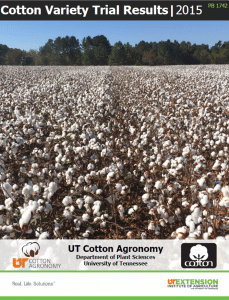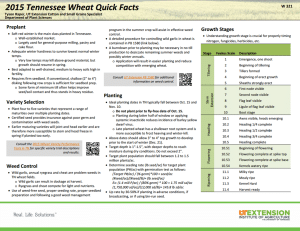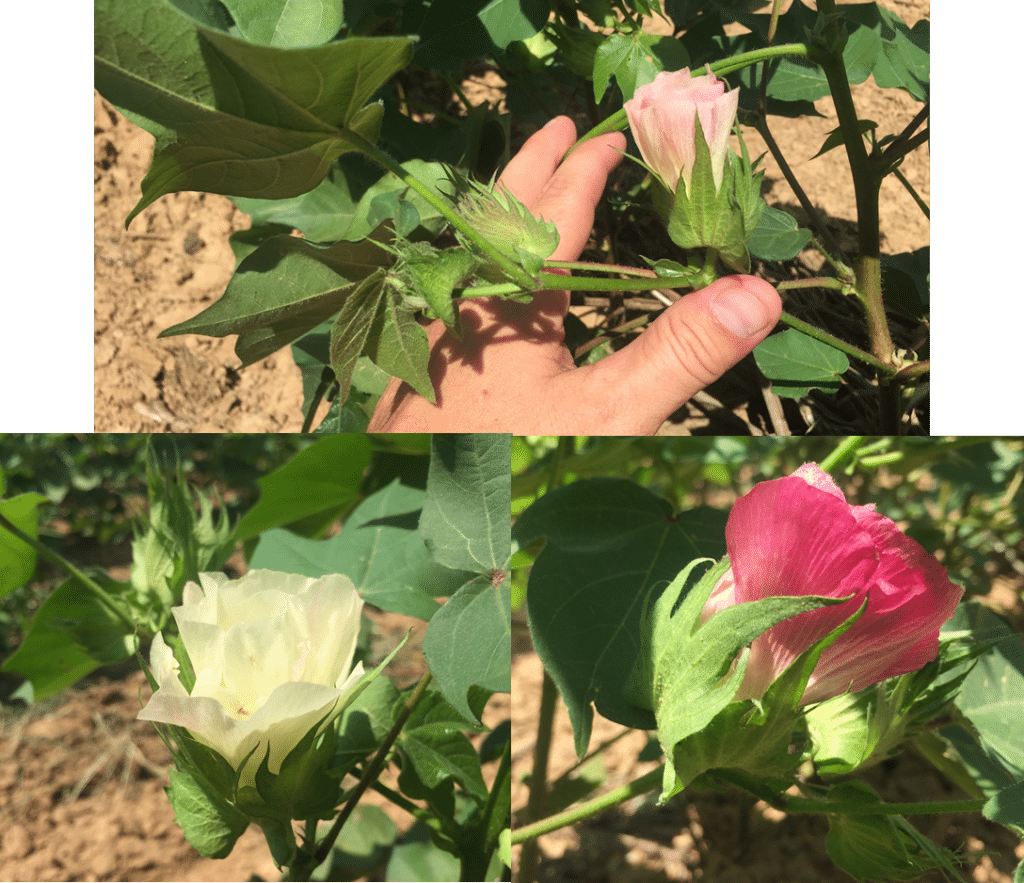 UT’s Soybean Scout Schools are scheduled in July for the dates and locations below. The programs are supported by the Tennessee Soybean Promotion Board and include basic information about crop development, scouting procedures, and Continue reading
UT’s Soybean Scout Schools are scheduled in July for the dates and locations below. The programs are supported by the Tennessee Soybean Promotion Board and include basic information about crop development, scouting procedures, and Continue reading
Category Archives: Fertility
Managing cotton plant growth in 2016
Many fields in West TN reached first flower well-before the 4th. I wouldn’t be surprised if over half of our acres will be blooming by the end of the week. With rain and warm temperatures in the forecast, expect very rapid plant growth in areas which have adequate moisture as we move into flowering. For those who have not applied an early shot of a plant growth regulator (PGR), you should consider doing so very soon. Several points should be considered when attempting to regulate growth in 2016. Continue reading
Milan No-Till Field Day Set for July 28
 MILAN, Tenn. – UT AgResearch will host the Milan No-Till Crop Production Field Day on Thursday, July 28, 2016 at the AgResearch and Education Center at Milan. The event will offer 40 research-based presentations. Sessions will cover best management strategies for no-till crop production, including nutrient enhancement, water use, new technologies in pest control and advancements in plant breeding.
MILAN, Tenn. – UT AgResearch will host the Milan No-Till Crop Production Field Day on Thursday, July 28, 2016 at the AgResearch and Education Center at Milan. The event will offer 40 research-based presentations. Sessions will cover best management strategies for no-till crop production, including nutrient enhancement, water use, new technologies in pest control and advancements in plant breeding.
The event is free and open to the public. Gates open at 6 a.m. Presentations and an agricultural industry trade show begin at 7 a.m. The field day will conclude at 2 p.m.
A schedule, a list of presentation topics, and information on pesticide recertification points as well as Certified Crop Advisor CEUs are available at http://milan.tennessee.edu/MNTFD. Individuals are also encouraged to follow the event on social media platforms using the hashtag #MilanNoTill.
Cotton Planting Forecast
I’ve spoken with several who planted a few fields last week. Soils have been a little cooler than we would prefer but it was hard to keep the planter at the shop with 60+ degree soil temperatures at 3” at 8 AM with warm temperatures in the forecast. Moisture is currently not hard to find in most areas given you caught some of the showers Continue reading
Upcoming Crop Production Meetings
Meeting season is in full swing, and there are several educational opportunities fast approaching (see below). Pesticide re-certification points and CCA points will be available at all these meeting. Additional details will be provided soon! Continue reading

2015 TN Cotton Variety Trial Results
 The 2015 TN Cotton Variety Trial Results Publication (PB1742) is now available online. This document contains detailed results from all harvested trails in the 2014 University of Tennessee Cotton Variety Testing program. This expanded publication follows the recently published summary publication, 2016 TN Cotton Variety Guide (W285), which was released a few weeks ago. Continue reading
The 2015 TN Cotton Variety Trial Results Publication (PB1742) is now available online. This document contains detailed results from all harvested trails in the 2014 University of Tennessee Cotton Variety Testing program. This expanded publication follows the recently published summary publication, 2016 TN Cotton Variety Guide (W285), which was released a few weeks ago. Continue reading
2015 Tennessee Wheat Quick Facts now available
 Now available online, the 2015 Tennessee Wheat Quick Facts Publication (W 321) is designed to be a single page (printed front/back) summary of the most pertinent Continue reading
Now available online, the 2015 Tennessee Wheat Quick Facts Publication (W 321) is designed to be a single page (printed front/back) summary of the most pertinent Continue reading
Keep soil compaction in mind while harvesting
September has been warmer and drier than normal but rain is in the forecast over the next few days. The first report of picking in TN came in late last week and we should be in full-picking-mode after this rain moves through. Still, there is more to getting back into the field than just waiting for the bolls to dry and ground to ‘hold up’. With the adoption of the new module-building pickers, the weight of our equipment has increased to record levels. Continue reading



